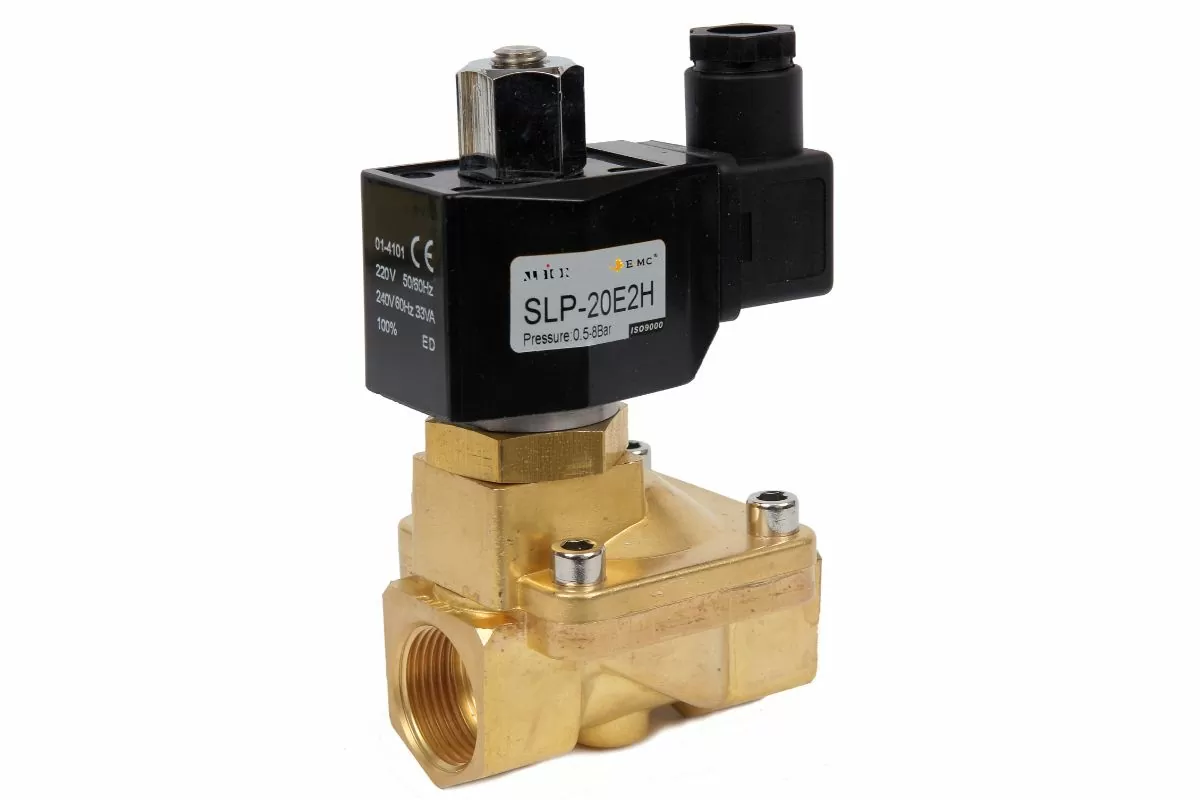 Add My Company
Add My Company

For those outside the world of engineering, the term solenoid valve may fall on deaf ears. However, if you’re responsible for upholding a building’s water system stability and safety, particularly in commercial or industrial infrastructure, you may have come across them before.
However, even if you’ve heard about solenoid valve switches before, do you fully understand what they are and how they operate? These staple fluid control valves allow fluids and gases to flow through pipes and tubes automatically, making them indispensable across various industrial settings.
Here at Applications Engineering, we supply all kinds of solenoid valves to shut off, release, mix or disperse liquids in a specified manner, for a variety of system sizes and configurations. Keep reading as we explore precisely what solenoid valves do along with breaking down their inner workings.
What is a Solenoid Valve?
In simple terms, a solenoid valve utilises an electromagnet to initiate the opening or closing of an opening inside the valve body, thereby regulating flow.
The electromagnet switches on or off based on signals from a control system, which prompts the valve to allow clean liquids or gases to pass through or block its passage completely.
You’ll find solenoid valves installed for an array of applications where rapid, frequently actuated on/off flow control is necessary. These include machine tools, chemical or pharmaceutical processes, and combustion engines along with water treatment, automotive, and food processing plants.
Types of Solenoid Valves
Solenoid valves come in a variety of configurations to suit different applications. Understanding the main types available can help narrow down what will work best for your specific needs.
Normally Closed Valves
Normally closed (NC) solenoid valves remain shut – by default- without power flowing to the electromagnet, preventing fluid or gas from travelling through. When the coil energises, the resulting magnetic field shifts the plunger to open the orifice and allow media to flow. NC solenoid valves are commonly used in gas-based systems.
Normally Open Valves
On the other hand, normally open (NO) solenoid valve designs have the orifice in an open position by default, enabling flow with the valve de-energised. When the electromagnet turns on, the plunger then seals the orifice shut to stop flow.
Keeping the passageway continuously open boosts efficiency in applications where fluid or gas must move through valves for extended durations. Normally open valves also enable fail-safe operation, closing only when actively triggered.
Bi-Stable Valves
Finally, bi-stable, or latching solenoid valves represent a power-efficient option. They use permanent magnets rather than springs to keep the valve in the open or closed state when not energised. These valves stay in position indefinitely without drawing coil power until switched via a momentary signal.

2-Port or 3-Port Valves?
Another key differentiator is the number of ports the valve controls.
2-port solenoid valves simply have an inlet and outlet to govern flow on and off. Meanwhile, 3-port valves add an exhaust port for venting fluid or gas when necessary. 3-port valves allow for additional flexibility, handling duties like venting air from machine cylinders or diverting flow between paths.
The specific function of the ports depends on the state of the (energised or de-energised) solenoid valve as well as the (open or closed) design.
Direct, Indirect and Semi-Direct Actuation
Solenoid valves also employ different approaches in their activation methods. Direct-acting designs utilise the electromagnet alone to shift the valve open. No minimum pressure differential exists.
Indirect or “servo” types use pressure differences across the valve to open and close. This allows small solenoids to control extremely high flow rates, but the trade-off is pressure energy gets consumed to assist actuation.
Semi-direct valves offer a middle ground. They use an electromagnet-driven plunger like direct-acting, except a pressure-sensitive diaphragm still handles flow control. This hybrid approach starts to flow at 0 bar differential yet handles high-flow applications.
How Do Solenoid Valves Work?
In the de-energised position, the plunger blocks flow between the inlet and outlet ports. The spring (if present) assists in keeping the plunger firmly in place along with pressure from the fluid or gas itself.
When the electromagnet activates courtesy of the control system sending power to the solenoid coil, the resulting magnetic field forcefully attracts the ferromagnetic plunger away from the inlet orifice. This allows gas or liquid to travel from the inlet to outlet ports through the valve body.
In designs without a default spring return, the plunger magnetically seals flow again when power cuts from the coil and de-energises the solenoid. Where a spring is installed, it pushes the plunger back against the orifice when deactivation occurs.
Discover Our Solenoid Valves and Pressure Switches
Hopefully, this breakdown demystifies precisely how solenoid valves function to regulate flow. At Applications Engineering, our experts possess immense experience specifying and recommending solenoid valve products across installations big and small.
We supply high-quality solenoid valves from leading brands alongside pressure switches, transducers, indicators and everything in between. Depend on us for valves and other parts suited to the unique needs of your pipe networks and machinery. To find out more about our products, or to get advice about which one meets your needs best, contact us today and one of our team will be happy to offer advice.
For more information on What is a Solenoid Valve and How Does It Work talk to Applications Engineering Limited

